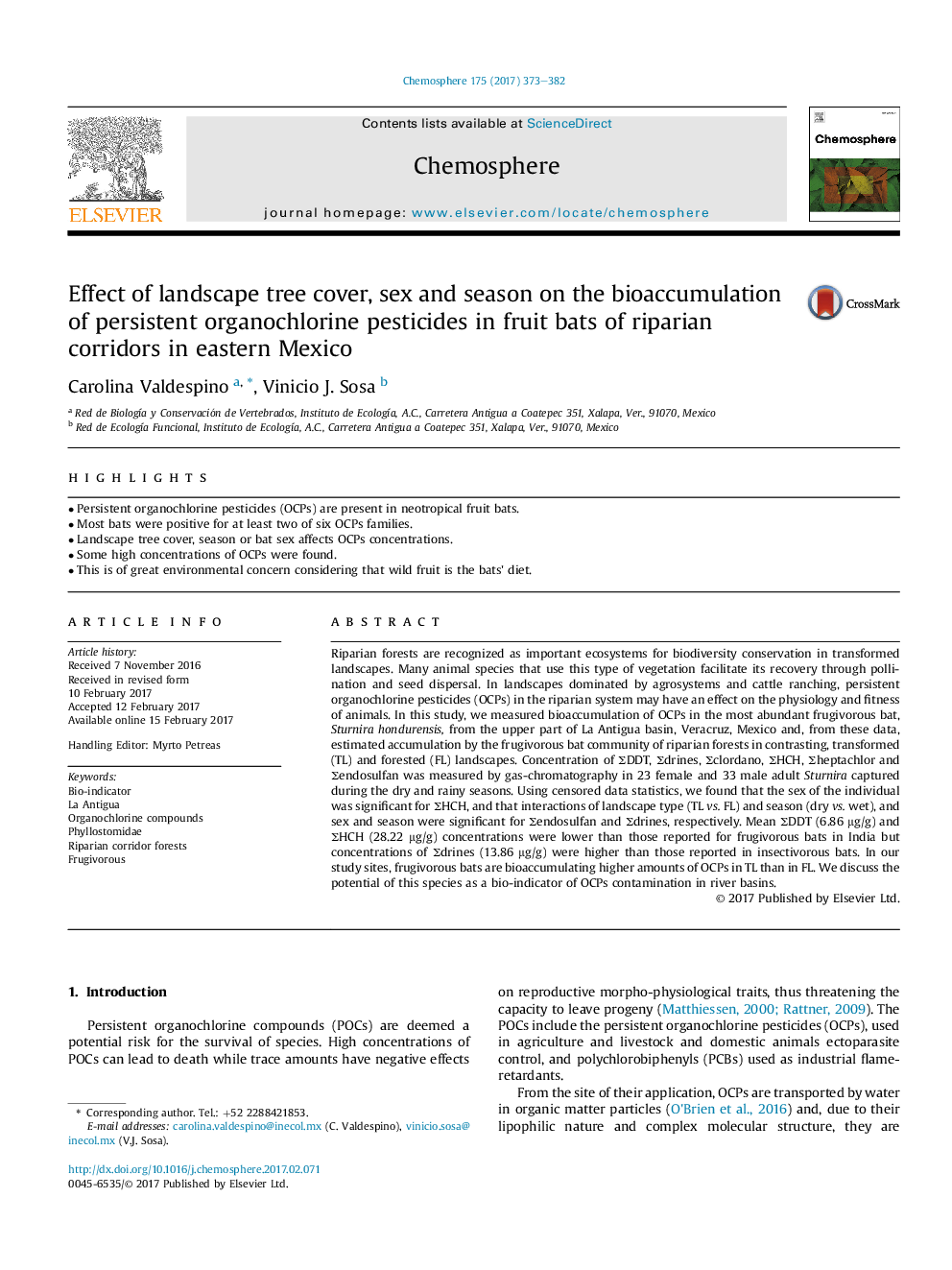| کد مقاله | کد نشریه | سال انتشار | مقاله انگلیسی | نسخه تمام متن |
|---|---|---|---|---|
| 5746481 | 1618796 | 2017 | 10 صفحه PDF | دانلود رایگان |
- Persistent organochlorine pesticides (OCPs) are present in neotropical fruit bats.
- Most bats were positive for at least two of six OCPs families.
- Landscape tree cover, season or bat sex affects OCPs concentrations.
- Some high concentrations of OCPs were found.
- This is of great environmental concern considering that wild fruit is the bats' diet.
Riparian forests are recognized as important ecosystems for biodiversity conservation in transformed landscapes. Many animal species that use this type of vegetation facilitate its recovery through pollination and seed dispersal. In landscapes dominated by agrosystems and cattle ranching, persistent organochlorine pesticides (OCPs) in the riparian system may have an effect on the physiology and fitness of animals. In this study, we measured bioaccumulation of OCPs in the most abundant frugivorous bat, Sturnira hondurensis, from the upper part of La Antigua basin, Veracruz, Mexico and, from these data, estimated accumulation by the frugivorous bat community of riparian forests in contrasting, transformed (TL) and forested (FL) landscapes. Concentration of ΣDDT, Σdrines, Σclordano, ΣHCH, Σheptachlor and Σendosulfan was measured by gas-chromatography in 23 female and 33 male adult Sturnira captured during the dry and rainy seasons. Using censored data statistics, we found that the sex of the individual was significant for ΣHCH, and that interactions of landscape type (TL vs. FL) and season (dry vs. wet), and sex and season were significant for Σendosulfan and Σdrines, respectively. Mean ΣDDT (6.86 μg/g) and ΣHCH (28.22 μg/g) concentrations were lower than those reported for frugivorous bats in India but concentrations of Σdrines (13.86 μg/g) were higher than those reported in insectivorous bats. In our study sites, frugivorous bats are bioaccumulating higher amounts of OCPs in TL than in FL. We discuss the potential of this species as a bio-indicator of OCPs contamination in river basins.
Journal: Chemosphere - Volume 175, May 2017, Pages 373-382
